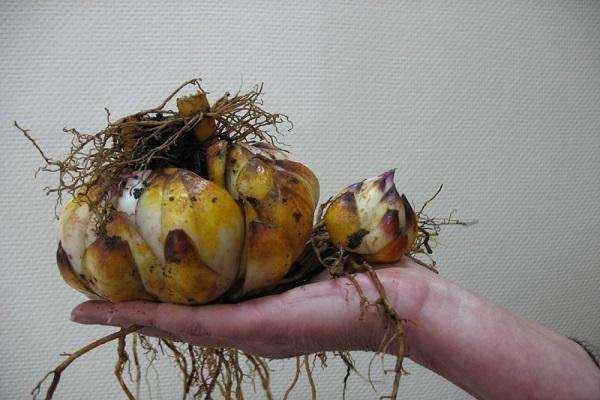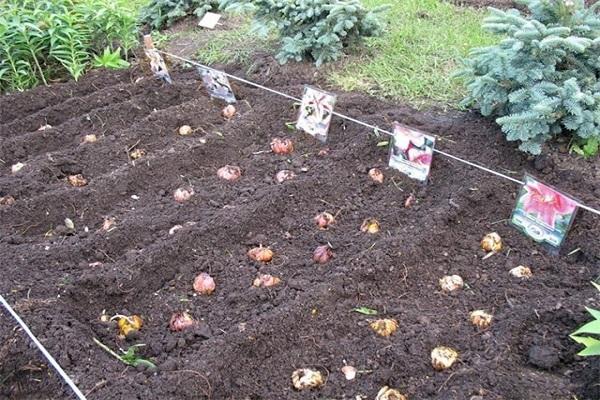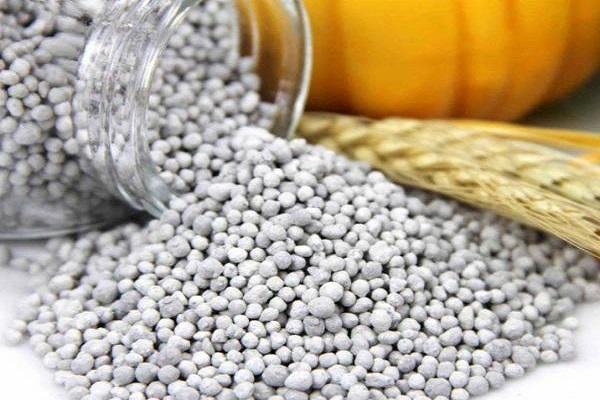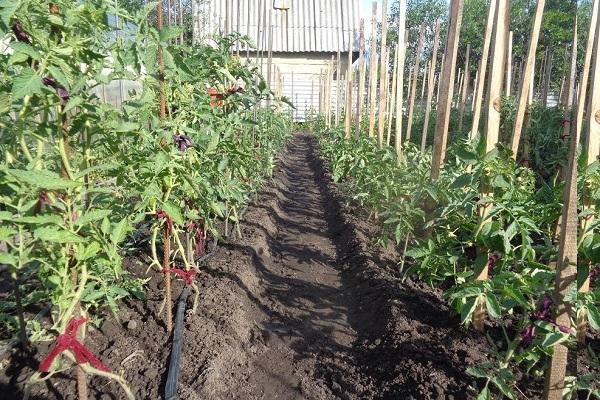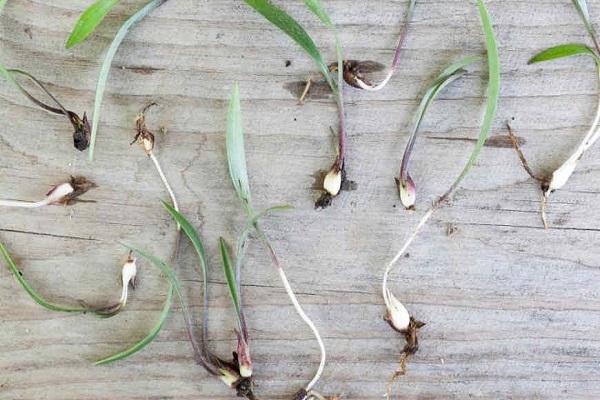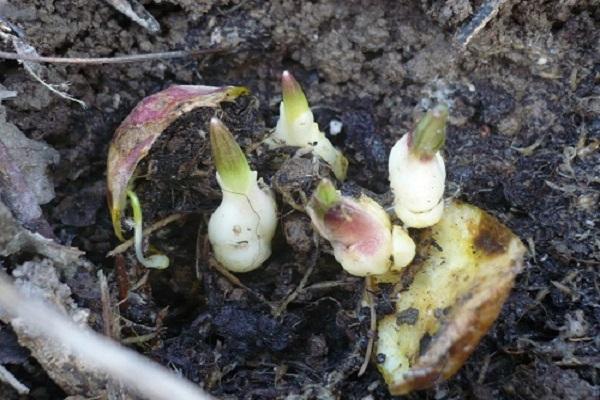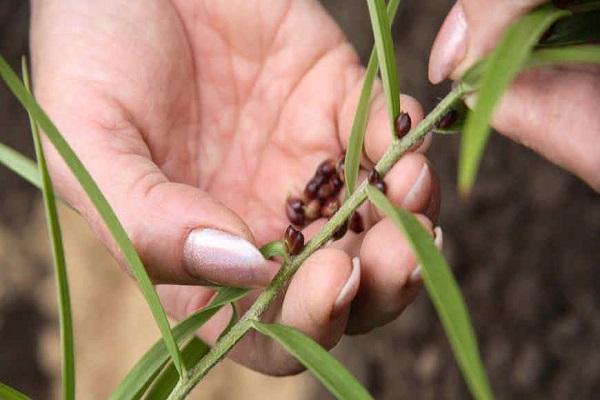Orienpets were the result of crossing Tubular and Oriental hybrids. There are many varieties in this category today, so gardeners have no problem choosing. Planting and caring for OT-hybrids of lilies in open ground is not much different from other varieties, but there are still some nuances. Therefore, before purchasing the variety you like, they study the recommendations of experienced flower growers, and only after that they begin to grow.
- Description of OT-hybrid lilies
- Popular varieties
- Main pros and cons
- Specifics of cultivation
- Selection of planting material
- Choosing a landing site
- Proper soil preparation
- Processing of planting material
- Planting scheme
- Subtleties of flower care
- Watering and fertilizers
- Transfer
- Loosening, mulching
- Pinching, pinching, pruning
- Breeding rules
- Bulbs
- Children
- Scales
- Bulbs
- Examples of use in garden design
Description of OT-hybrid lilies
A characteristic feature of OT-lily hybrids is a tall and strong stem on which a very large flower is located; in some cases it reaches 25 cm. The shape of the buds is funnel-shaped or looks like a bowl. Among the lilies there are representatives of both monochrome and multicolor colors. The most popular shades among gardeners are red, orange, yellow and pink.
Most often, OT hybrids are intended for cultivation in floriculture farms for cutting. But thanks to the efforts of breeders, in recent years varieties have appeared that everyone can grow in open ground.
Popular varieties
Among the varieties of OT hybrids, gardeners especially liked the following representatives:
- Black Beauty. An almost black lily with a drooping turban-shaped flower. It has very long stamens, and the edge is decorated with a thin white border.
- Beverly Dream. OT-hybrid with a wine-red neck and a white stripe along the edge. Beverly Dream has a star shape.
- Big Brother. The flower of these lilies is one of the largest and reaches 25 cm. The stamens inside the lily are black, and the shade is yellow-vanilla.
Main pros and cons
Representatives of this category have their own advantages and disadvantages, which are taken into account before disembarking.
The advantages of OT hybrids include:
- Less susceptible to disease than other hybrids.
- Tolerance of acidic soils, which are so rich in central Russia.
- The presence of many flowers on one stem, their amazing aroma.
The disadvantages of growing these beauties include the need for proper choice of location and difficult care in the open ground.
Specifics of cultivation
Before starting planting work, study the rules for preparing the material and choosing a location. The health of the OT hybrid and the quality of its flowering depend on the ability to correctly fulfill these requirements.
Selection of planting material
Purchase hybrid bulbs only from trusted gardening stores that have certificates of product conformity. You can also ask for material from a nursery where lilies are bred. Since hybrids are expensive, you should not take the risk of purchasing them on spontaneous markets, there is a risk of deception.
Each bulb is inspected before purchase - there should be no signs of rotting and mold, as well as looseness.
All scales should fit tightly to each other and have a uniform white color. When purchasing, take into account the place where the lily will be placed, and select the height based on this.
Choosing a landing site
Only open sunny areas are suitable for growing OT hybrids, and it must be taken into account that the lower part of the plant should be in the shade, and the buds themselves should be in the sun. A prerequisite is protection from cold winds and drafts. Just a little ventilation of the area is enough.
The root system of hybrids reacts negatively to close groundwater and flooding, so a small mound is built and a flower is placed on it. If the lilies have determined a place in the flower garden, make sure that it is in the background, otherwise the hybrid will block the light of all low plants.
Proper soil preparation
Heavy soils should not be used for cultivating hybrids. The soil should be light, fertile, well-permeable with water and oxygen to nourish the roots.To improve the quality of the soil, sand is added to it. Hybrids are not sensitive to acidity levels and grow well even on acidic soil types. But increased attention is paid to drainage; excess moisture at the roots leads to their rotting.
The selected place is dug up and beds are formed, raising them 15-20 cm above ground level.
Processing of planting material
Before planting, the bulbs are inspected, damaged specimens are discarded, and the rest are treated with a weak solution of potassium permanganate.
Planting scheme
If there are large hybrid bulbs, they are buried 10-12 cm; for small ones, 7-8 cm is enough. The taller the lily hybrid, the more it is buried in the ground when planting. Leave a distance of 17-20 cm between flowers.
When planting, it is better to sprinkle the roots of the bulbs with river sand; it will absorb excess moisture and prevent the roots from rotting. A nutritious soil mixture is added on top, which consists of turf soil and peat.
Subtleties of flower care
Their vitality, health and beauty of buds depend on proper care of hybrids.
Watering and fertilizers
During periods when there is sufficient natural precipitation, lilies do not need additional moisture. They independently saturate themselves with moisture from the layers of the earth. In hot weather, hybrids are provided with complete hydration in the morning and evening. It is preferable to pour the liquid under the root rather than on the leaves. However, they observe the measure - with a large amount of moisture, there is a risk of the bulbs rotting in the ground.
The first feeding is given to hybrids in early spring; mineral fertilizer is suitable for these purposes. Repeat the same application of the complex at the time of bud set.After the flowering process is over, the plant is helped to regain its strength. To do this, phosphorus-potassium fertilizers are added to the soil.
Transfer
To avoid shrinking of lily flowers, the transplant procedure is carried out regularly every 3-4 years. To do this, divide the mother bulb into several parts and plant it in beds.
Loosening, mulching
After each rain or artificial moistening of the soil, it is necessary to loosen the soil. However, they do this very carefully so as not to damage the hybrid bulbs. Along with loosening, weeds that interfere with the development of flowers are removed.
To reduce the amount of moisture, experienced gardeners recommend laying a layer of mulch around the flowers.
For these purposes, peat or humus is used.
Pinching, pinching, pruning
In the first year of cultivation, it is worth allowing the hybrid to gain strength; for this, the flower stalks are cut off. In the following seasons, faded inflorescences are regularly plucked off to prolong the flowering period. Before wintering, the entire stem of the lily is cut off to fully cover the hybrids.
Breeding rules
There are several simple ways to independently breed your favorite variety. Each gardener chooses based on his experience and skills.
Bulbs
From the buds on the bulb, new full-fledged specimens are periodically formed. At the time of transplanting, the plants are carefully separated, soaked in a weak manganese solution and planted in the beds. New lily hybrids will soon grow from them - this method is considered one of the simplest and is suitable for beginner gardeners.
Children
The small children produced by the adult lily hybrid are separated and planted in a separate bed for growing.They need to be provided with a sufficient amount of heat and light; a mini-greenhouse is built, which is removed from time to time for ventilation. When the bulbs become stronger, they are transferred to flower beds and cared for like adult lilies.
Scales
Carefully dig out the hybrid bulb and separate the scales from it. It is best to use the largest and top specimens for these purposes. To obtain planting material, it is not necessary to completely remove the lily bulb from the ground, just carefully rake the soil from above. The collected scales are pre-treated in a slightly pink solution of potassium permanganate.
Next, take a plastic bag, fill it with a damp substrate and place the dried scales there. After a few months, small bulbs form on them, and they are transferred to open ground in a garden bed.
Bulbs
The aerial bulbs that ripen in the axils of lily leaves in the autumn are called bulbs. They are quite easy to separate from the mother plant. Afterwards, they are soaked in potassium permanganate in the same way as the scales. The bulbs are transferred to the prepared bed with a distance of 20 cm between the rows. In winter, they are covered with spruce branches or sawdust to prevent them from freezing. The first flowers will appear on the hybrid only after 3 years, but thanks to this method, all varietal characteristics of the parent plant are preserved.
Examples of use in garden design
Luxurious tall OT hybrids will become the central accent of any flower bed. You should not place tall lilies in the foreground; they will cover the rest of the inhabitants of the flower garden and block their access to sunlight.
The ideal option for placing hybrids would be the second or third row, and low-growing crops are planted in front of them. The color of hybrids is selected either in one tone or in contrast.



